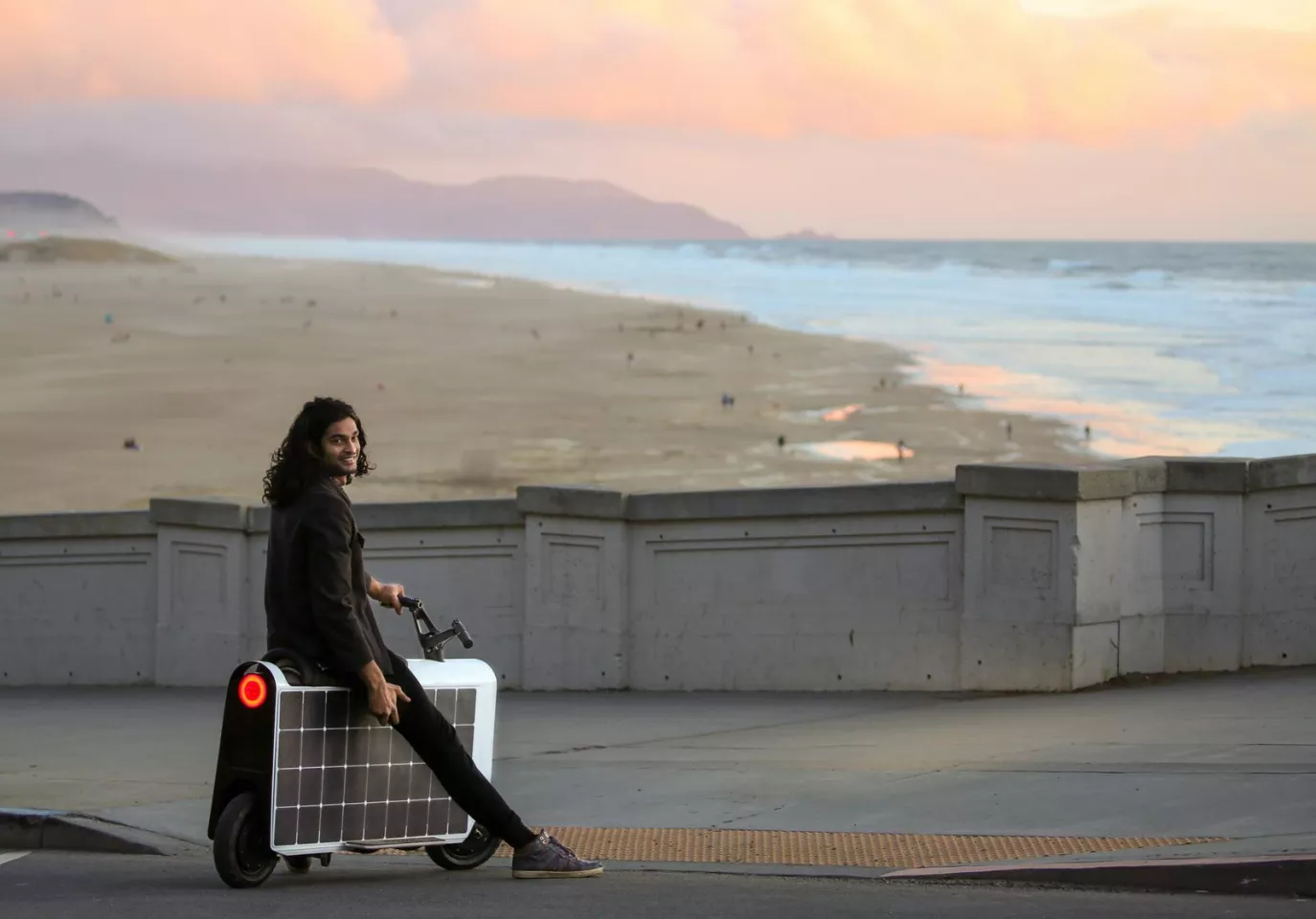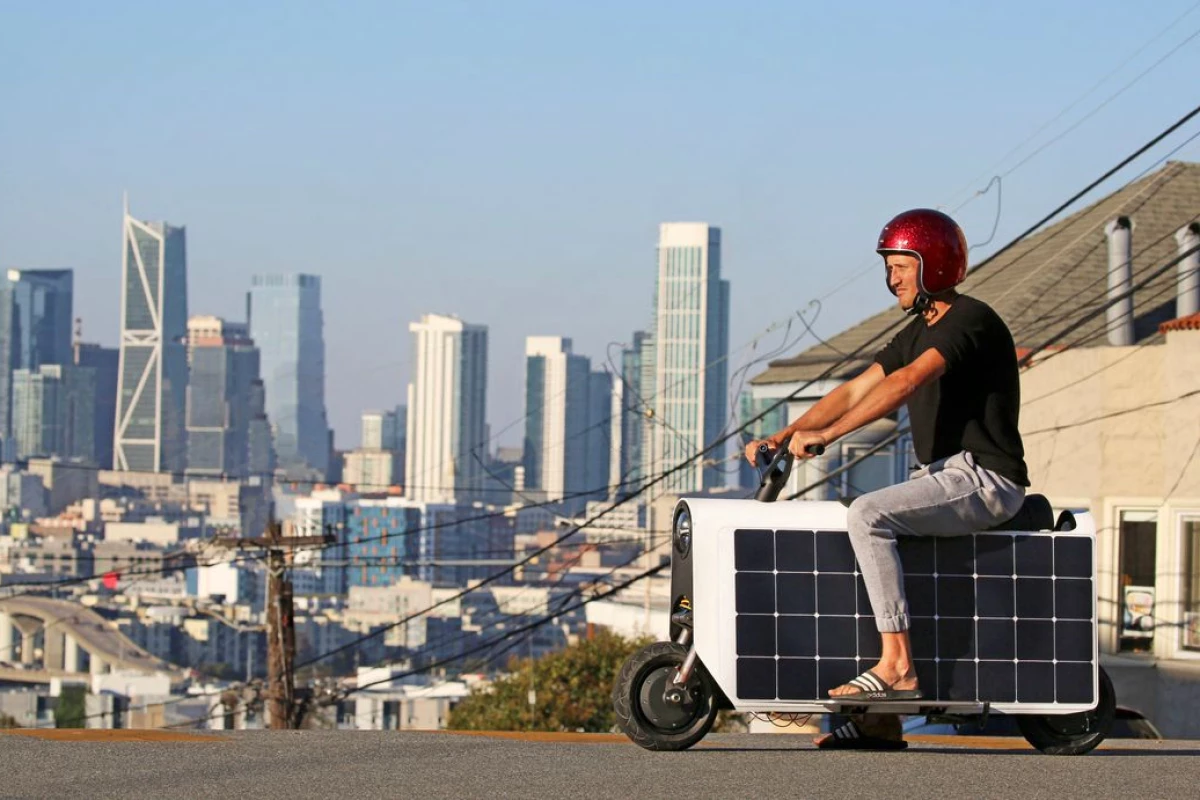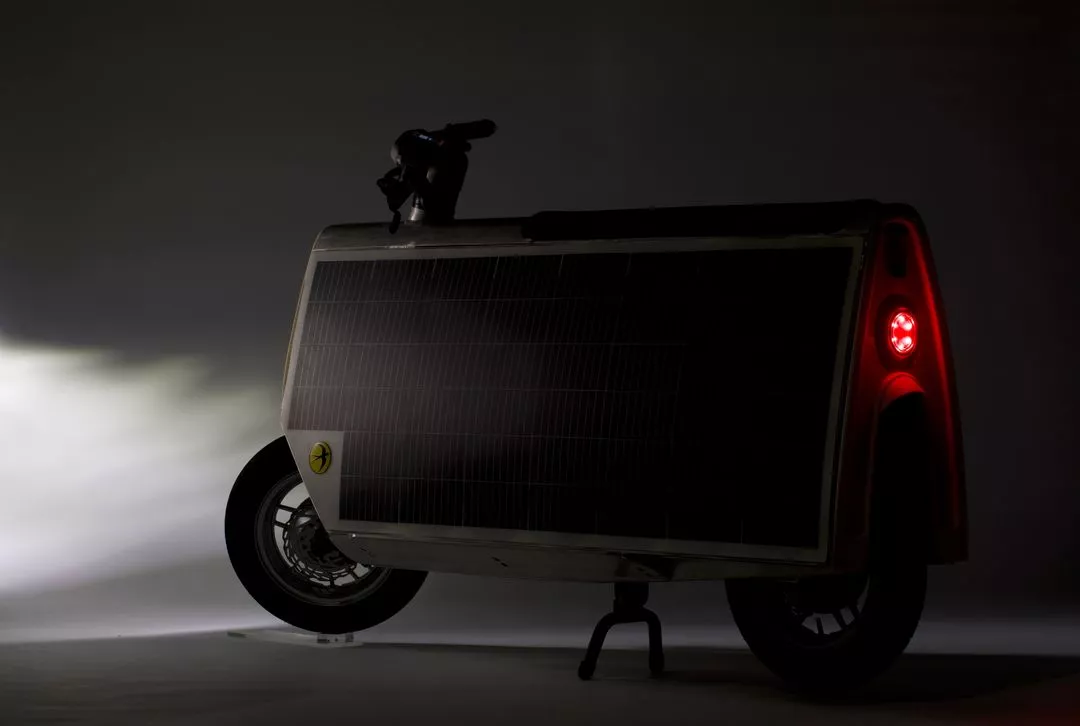While many EVs use solar panels to extend their range, those panels often don't look like they'd make much of a difference. Such is certainly not the case with the Lightfoot scooter, however, the sides of which are covered with panels that reportedly provide up to 18 miles of extra range per day.
Invented by Australian engineer Saul Griffith, the Lightfoot is manufactured by San Francisco startup Otherlab, which he co-founded.
The two-rider vehicle is propelled by two brushless 750-watt hub motors – one in each 10-inch wheel – which are in turn powered by a 48V/1.1-kWh lithium-ion battery. One wall-outlet charge of that battery is claimed to be good for a range of 37 miles (60 km).

That said, the range can reportedly be extended by up to 18 miles (29 km) per day via the scooter's two 120-watt solar panels. This figure is based on a typical day of use, during which the Lightfoot will frequently be left parked in bright sunlight. According to Otherlab, one hour of "peak sunlight" exposure averages out to approximately 3 miles (5 km) of extra range.
And no, we're told that the solar panels will not get hot enough to burn the insides of the rider's legs. One of the panels, however, can be opened gullwing-style to access a 1.5-cubic-foot (45.2-l) lockable weatherproof storage space within.

The Lightfoot has a top speed of 20 mph (32 km/h), can be ridden on roads and in bicycle lanes, and does not require a license to operate. Battery life, current speed and other information is displayed on a waterproof 2.8-inch LCD touchscreen.
Some of the scooter's other features include Lezyne head- and tail lights (2,000 lumens in front); Tektro hydraulic disc brakes; house-brand coil-spring front and rear shocks; and a 120-decibel electric horn. The whole thing tips the scales at a claimed 137 lb (62 kg), and can accommodate riders ranging from 5 ft, 2 inches to 6 feet, 2 inches (157.5 to 188 cm) in height.

The Lightfoot scooter will retail for US$4,995, with deliveries expected to commence in January. Prospective buyers can register for a place in line via the product website.
Source: Lightfoot








